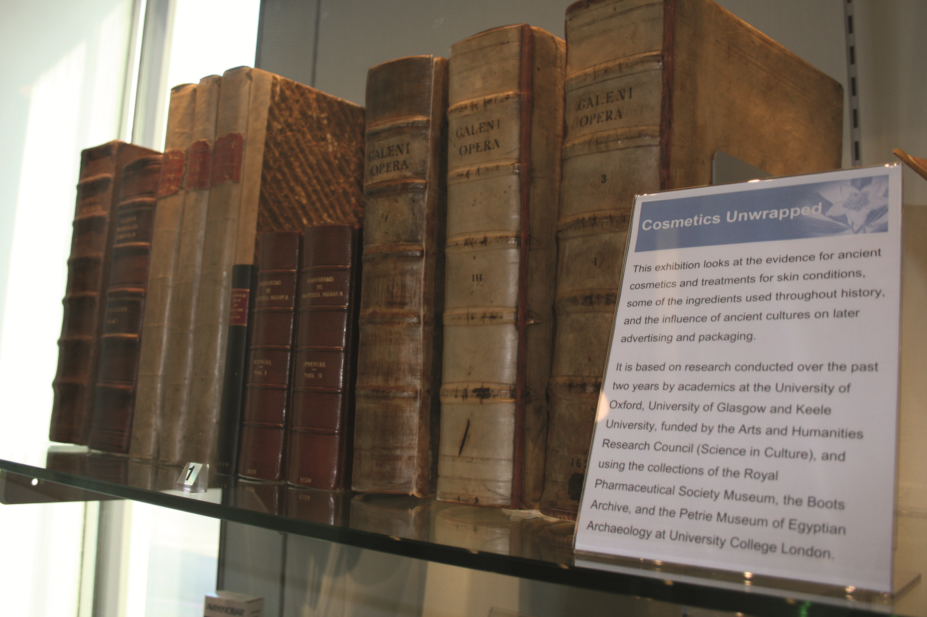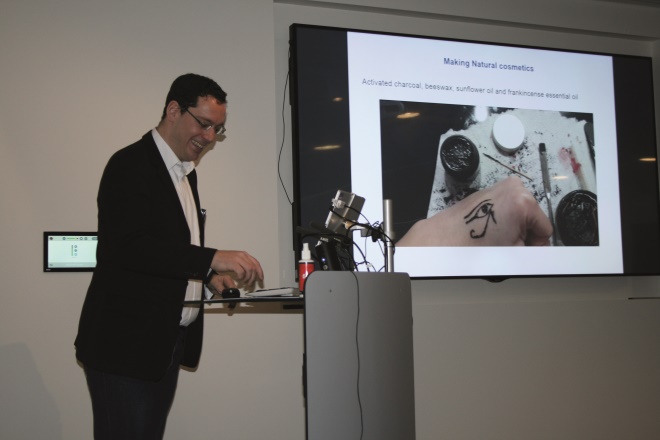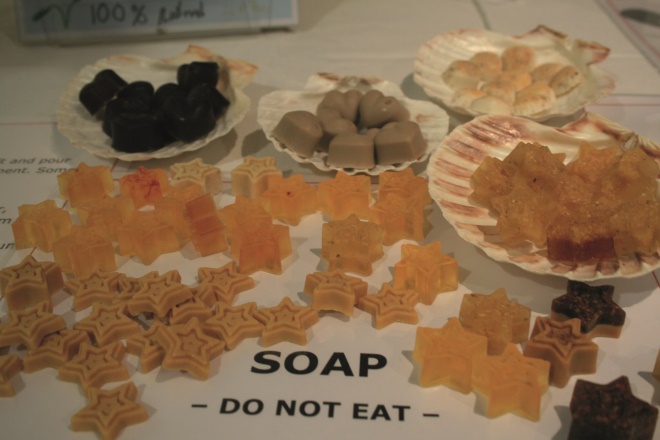
RPS Museum / Corrinne Burns / PJ
Historical cosmetics from the Royal Pharmaceutical Society (RPS) and Petrie museums, and the Walgreen Boots Alliance Archive, have been analysed as part of a wide-ranging study into skincare across the centuries.
‘From natural resources to packaging, an interdisciplinary study of skincare products over time’ was an Arts and Humanities Research Council (AHRC)-funded project to explore the formulation and packaging of historical skincare products, which ran from March 2016 until February 2018. The RPS museum was a partner in the project, alongside the Universities of Oxford, Glasgow and Keele, and the Boots archive.
A conference to celebrate the completion of the project was held at the RPS London headquarters on 16 February 2018. Welcoming delegates to the day, Thibaut Devièse, researcher at Oxford University’s School of Archaeology and principal investigator on the project, told delegates that the research had begun with a survey of cosmetic recipes from historical texts spanning Roman to Victorian times.

Source: Corrinne Burns / The Pharmaceutical Journal
Thibaut Devièse gave an overview of the research
Some of the older recipes had, he said, called for “things that we wouldn’t put on our face today, like urine, sour milk, crocodile dung and turtle brain.” More recognisable skincare ingredients from historical texts included a large number of plant-derived materials, including essential oils, resins and gums, madder root, and even wine.
“These substances were associated with specific properties — resins were anti-wrinkle, for example”, Devièse said. Szu Shen Wong, lecturer in pharmaceutical sciences at Keele University and co-researcher on the project, used modern knowledge in pharmacology to assess the likelihood that historical products really had the properties claimed.
“In some cases, they did. In other cases — well, putting mercury or lead on your face wasn’t a good idea.”
The use of lead in cosmetics, for example, is something that the RPS Museum has covered in the past.
Cosmetic residues found in artefacts from the RPS Museum and Petrie Museum of Egyptian Archaeology were analysed to try to identify the ingredients, Devièse added. These included a 19th century ointment labelled “bear’s grease”, purportedly used to promote hair growth, from the RPS collection. “Matthew [Johnston, RPS Museum documentation assistant], and John [Betts, keeper of the RPS Museum] wanted to know if [the grease] was really from a bear, so I asked my colleagues in Oxford to use DNA analysis to find out,” Devièse said. As it turned out, extracting DNA from the sample was “really tricky”, so researchers are still working on it. “But we hope to develop a protocol that will allow us to extract the DNA and see which animal this cream came from”.
The team also sampled cosmetics from a 3rd century child’s tomb, located in France, and a broad range of items from the RPS and Petrie museums. Researchers at Kew Gardens are analysing plant matter from these cosmetics, Devièse told delegates, and data from the project will be published once these tests have been completed.
Other aspects of the research looked at the changing fashions in skincare packaging over time, led by Jane Draycott, a researcher in ancient science and technology at the University of Glasgow. Egyptian iconography was a common theme in dental care and soap packaging in the late 19th and early 20th centuries, Devièse said. Hayden’s Coffin Tooth Powder, from around 1910, even came packaged in a miniature ceramic sarcophagus.
The day closed with a guest lecture from James Wong, an ethnobotanist and author of Grow Your Own Drugs and How to Eat Better. Wong explained that the word “natural”, as applied to food and medicines, has an instinctive, cross-cultural appeal. But he warned against a common tendency to polarise our worldview into a simplistic moral response wherein natural is always “good”, as opposed to “bad” artificial products.

Source: Corrinne Burns / The Pharmaceutical Journal
James Wong spoke about the cross-cultural appeal of natural products
“Things are not necessarily safe or beneficial by virtue of being natural, although they very often are,” he said.
“Conversely, they’re not necessarily unsafe just because they’re unnatural.”
On 16 February 2018, the Society opened its doors to the public for a special workshop, during which, visitors made their own toothpastes and powders with Anisha Gupta, and oatmeal moisturisers with Julie Wakefield. Guests were also able to test moisturisers reformulated by Szu Shen Wong, according to a recipe by the Roman poet Ovid.

Source: Corrinne Burns / The Pharmaceutical Journal
Soaps prepared according to an ancient recipe
A new display in the RPS museum showcases many of the cosmetics analysed, as well as a range of other natural substances used historically in skincare and cosmetics. The display will remain open until August 2018.
You may also be interested in
Long service of members

Membership fees 2022
